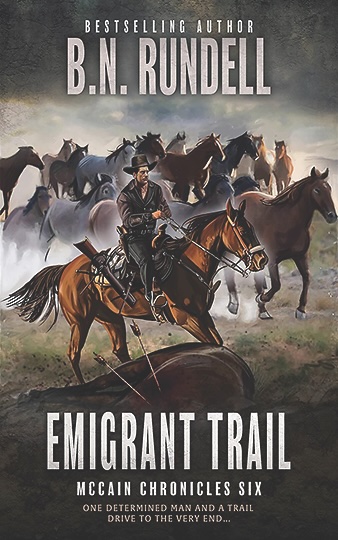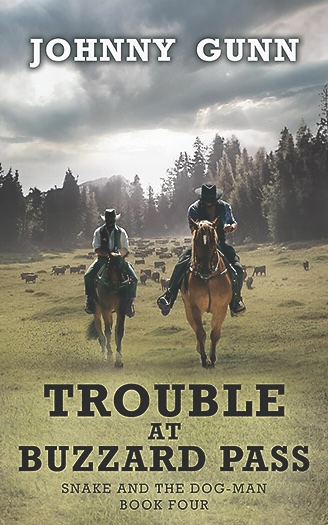Across the past 150 years of Western American history scholarship, dozens of authors have been inspired to research and write about mining in the West, but few have written about the role of women miners and their contributions to the settlement of the West. Now, with Linda Wommack’s groundbreaking Women of the Colorado Mines (Farcountry Press, $18.95) we have one of the first efforts to chronicle the role of women in the mining districts of the boom and bust gold and silver towns of Colorado. As she states in her introduction, “Women, too, came to the Rocky Mountain West in search of gold. Most, however, made their living supplying the miners’ many needs. But a few adventurous, courageous women dug in deep.”
Wommack’s Women of the Colorado Mines is well illustrated and includes the few photos she could find of women miners, such as Angeline Munn, who billed herself as the “Gold Woman of Colorado.” For scholars interested in her research, her endnotes are published at the conclusion of each chapter and her bibliography is especially useful. I also liked the fact that she did not leave the history sitting in the last century. Wommack informs us that women are still mining in Colorado and supporting the “industry as scientists, biologists and chemists.”


Conversely, the study and research of medicine and physicians in the West is still a minor area of scholarship in comparison to the well-established and popular category of Western mining history. Scholarly research about frontier female doctors is a nascent arena for Western historians, which is exactly why author Chris Enss has applied herself to studying the courageous women who challenged the status quo of America’s medical industry. Enss’s latest Western women’s history, The Doctor Was a Woman: Stories of the First Female Physicians on the Frontier (TwoDot, $26.95), is another trailblazing effort by the California author.
Enss is at her best when writing about women who would not take no for an answer and pushed their passions forward in pursuit of their professional and personal goals. From the first page to the last, readers of The Doctor Was a Woman will discover again and again female doctors who did not blanch at the challenges to succeeding in the nearly all male profession of medicine. “Women physicians’ love for humanity and zest for pioneering were strong,” Enss writes in her introduction. “Where doctors were few in the regions beyond the Mississippi, prejudices against women in the profession weren’t as often acute.”
What’s next for Enss and Wommack? My guess is we won’t have to wait too long for new books from either of them, as they are both at the top of their game and out in front of the trail on Western women’s history. If their efforts do not inspire a boom in the publishing of women’s mining and medical history, then their peers are not paying attention to the paths they have blazed for them to follow.
—Stuart Rosebrook
Violence South of the Border

In the wake of the deadly Mexican Revol-ution in the first part of the 20th century, Mexico was in a state of pure political upheaval. Two Revolutionary generals from the northwestern state of Sonora emerged, and their power and influence began to dominate the region between 1920 and 1934. In The Sonoran Dynasty in Mexico: Revolution, Reform, and Repression (University of Nebraska Press, $35), Jürgen Buchenau, Dowd Term Chair of Capitalism Studies and a professor of history at the University of North Carolina at Charlotte, unravels this dynastic cobweb who sought to unify a new Mexico while rejecting the Indigenous and Catholic traditions of Mexico while embracing the rich American and other foreign capitalists. What emerged was a second bloody conflict for control of Sonora after a decade of warfare over similar principles.
—Erik J. Wright, assistant editor of The Tombstone Epitaph
A Hero’s Journey

Emigrant Trail is the sixth entry in B.N. Rundell’s McCain Chronicles (Wolfpack Publishing, $12.99), and the clean, straight-forward tale offers its old protagonist some grace, allowing him to finally catch up to the errant twin sons he’s been trailing since book one. Reunited with his boys, Jubal and Joshua, McCain makes up a plan to drive 800-plus cattle east across the Rockies and Great Plains from California to Fort Hayes, Kansas. Through side draws and canyons, errant trials and a rough country full of snakes, grizzlies and Cheyenne dog soldiers, Eli charts a course that’s not guaranteed, but never without hope. A classy tale that foregoes anti-hero grit and tiresome tough-guy language for family-friendly characters, this one delivers plenty of action and thrills for readers eager for traditional Western fare.
—Richard Prosch, author of Seven Devils Road: Hellbenders Book 2
With Deadly Force

Deputy U.S. Marshal Jeremy Halstead commented, “It would be nice to go a day without shooting someone.” His days seldom go nicely. In Terrence McCauley’s Born to Hang: A Jeremiah Halstead Western (Kensington, $8.99), Halstead’s enemies have convinced a judge to swear out warrants on trumped up murder charges. An army of mercenaries and half-baked bounty hunters are out to kill him, and even the Montana winter weather is cooperating as he runs for the high and lonely. His friends rally to clear his name, but it remains unclear that they will have any success against overwhelming political strength. A woman with surprising powers to cloud men’s minds increases the drama as only Halstead seems impervious to her wiles. The story left me wanting to read the other books in this series.
—Doug Hocking, author of Southwest Train Robberies: Hijacking the Tracks Along the Southern Corridor
On the Hunt

Johnny Gunn’s Trouble at Buzzard Pass: A Snake and the Dog-Man Classic Western (Wolfpack Pub-lishing, $10.99) is full of action as Snake and Dog-Man prepare and drive their cattle to San Bernadino. Before they start their drive, two men try to kill them and burn their ranch. On the drive, four men try to take wagons traveling with the herd and want to kill Snake and Dog-Man. When three of the men get killed, the remaining man is driven by revenge. The story will keep you wondering what will happen next. I recommend it.
—Lowell F. Volk, author of Luke Taylor and Trevor Lane series
Rough Drafts
Every winter and spring, history publishers release their new lists for half the year, and Old West history fans have some great new titles to choose from in 2024. Here are 11 I highly recommend:
The Bower Atmosphere: A Biography of B.M. Bower by Victoria Lamont
(Bison Books, $24.95)
Buffalo Bill and the Mormons by Brent M. Rogers (Bison Books, $29.95)
“That Fiend in Hell” Soapy Smith in Legend by Catherine Holder Spude (University of Oklahoma Press, $26.95)
Killing over Land: Murder and Diplomacy on the Early American Frontier by Robert M. Owens (University of Oklahoma Press, $45)
The Cowboy Ike Rude: Riding into the Wind by Sammie Rude Compton with a contribution by Michael R. Grauer; foreword by Charles R. Townsend (Texas A&M University Press, $32)
The Oceanside History of Alaska by Mike Coppock (Epicenter Press, $19.95)
The German Texas Frontier in 1853: Ferdinand Lindheimer’s Newspaper Accounts of the Environment, Gold, and Indians by Daniel J. Gelo and Christopher J. Wickham (University of North Texas Press, $34.95)
King of the Gunrunners: How a Philadelphia Fruit Importer Inspired a Revolution and Provoked the Spanish-American War by James W. Miller (University of Mississippi Press, $35)
Ride the High Country by Robert Nott (University of New Mexico Press, $19.95)
Cowboy Cocktails: 60 Recipes Inspired by the American West by Andre Darlington (Epic Ink, $19.99)
Last Paper Standing: A Century of Competition between the Denver Post and the Rocky Mountain News by Ken J. Ward (University of Colorado Press, $51)
—Stuart Rosebrook
Building Your Western Library
Alaskan Author Shares Favorites

Mike Coppock grew up dreaming of the frontier and finding it in today’s Alaska. He traveled north in 1985 and ended up working everything from canneries to teaching school and flight service for the FAA in the Alaska Bush. He wrote two books on Alaska, Terror in the Klondike and the just-released The Oceanside History of Alaska.
Alaska: Saga of a Bold Land by Walter Borneman (Harper): Borneman does an excellent job walking the reader through Alaska’s history from the arrival of the Russians to the oil boom and the Exxon Valdez oil spill
The Klondike Fever by Pierre Berton (Basic Books): Berton grew up in Dawson after the Klondike Gold Rush. His book puts a very human face on the triumphs and tragedies of one of the most famous gold rushes in history.
Alaska: Federal Writer’s Project by Merle Colby (MacMillan): Colby was a struggling writer when he signed up for FDR’s Federal Writers program in 1938. He was assigned to Alaska. His work became a snapshot of the Territory of Alaska just before Pearl Harbor. It was a lifestyle like no other with stamps used for currency.
To Build a Fire and Tales of the North by Jack London (SeaWolf Press): London’s Call of the Wild and White Fang have spawned movies, but in the title short story of this collection London demonstrates he was a master wordsmith. You sense the horror and smell fear as a cocky traveler is caught unprepared during a winter’s journey.
Coming Into the Country by John McPhee (Farrar, Straus and Giroux): McPhee portrays Alaska just before oil money transformed the land through traveling with people looking for a new state capital site, young men going into the wilderness to test themselves and prospector Joe Vogler going from cabin to cabin preaching Alaskan independence.





